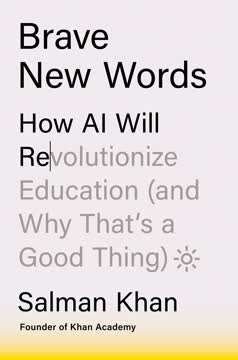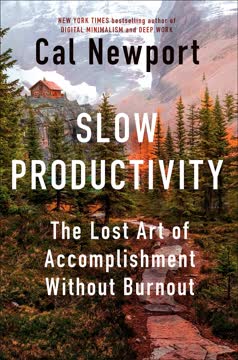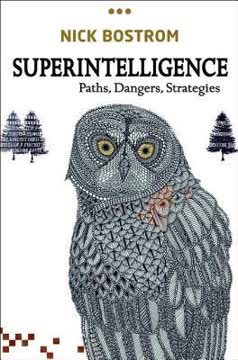Key Takeaways
1. AI: The Alien Mind Among Us
We have invented technologies, from axes to helicopters, that boost our physical capabilities; and others, like spreadsheets, that automate complex tasks; but we have never built a generally applicable technology that can boost our intelligence.
A new form of intelligence. Large Language Models (LLMs) like ChatGPT represent a breakthrough in artificial intelligence, exhibiting capabilities that seem almost human. Unlike previous AI systems focused on narrow tasks, LLMs can engage in human-like conversation, generate creative content, and solve complex problems across various domains.
Rapid adoption and impact. The speed at which LLMs have been developed and adopted is unprecedented. ChatGPT reached 100 million users faster than any previous product in history. This rapid integration into daily life and work processes is already reshaping how we interact with technology and each other.
Ethical and societal implications. The emergence of AI that can mimic human intelligence raises profound questions about the nature of consciousness, creativity, and the future of work. As these systems become more advanced, society must grapple with issues of AI alignment, ensuring these powerful tools serve human interests rather than potentially harming them.
2. The Jagged Frontier: AI's Unpredictable Capabilities
There are always problems with giving the AI tests, because the answer key might be in its training data, effectively allowing it to cheat by knowing the answers in advance.
Uneven abilities. AI's capabilities are not uniformly distributed across tasks. Some tasks that humans find difficult, AI can perform with ease, while others that seem simple to us can be challenging for AI. This creates a "jagged frontier" of AI abilities that is difficult to predict or map.
Hallucinations and limitations. Despite their impressive capabilities, LLMs are prone to "hallucinations" - generating plausible but incorrect information. They don't truly understand or know facts, but rather predict likely sequences of words based on patterns in their training data.
Implications for assessment and use. The jagged frontier and potential for hallucinations make it challenging to accurately assess AI capabilities or rely on them for critical tasks without human oversight. Understanding these limitations is crucial for effectively integrating AI into workflows and decision-making processes.
3. Alignment: Ensuring AI Serves Humanity
Aligning an AI requires not just stopping a potential alien god but also considering these other impacts and the desire to build an AI that reflects humanity.
Existential risks. Some AI researchers worry about the potential for superintelligent AI to pose existential risks to humanity if not properly aligned with human values and goals. This "alignment problem" is a central concern in AI ethics and development.
Immediate ethical challenges. Beyond long-term risks, current AI systems present more immediate ethical challenges:
- Bias and fairness issues in AI decision-making
- Privacy concerns related to data used for training
- Potential for misuse in creating disinformation or manipulating people
- Impact on jobs and economic inequality
Multifaceted approach to alignment. Addressing AI alignment requires efforts on multiple fronts:
- Technical solutions to make AI systems more transparent and controllable
- Ethical guidelines and regulations for AI development and deployment
- Public education and engagement to shape the future of AI in society
- Ongoing research into AI safety and beneficial AI development
4. Four Principles for Working with AI
Always invite AI to the table.
Principle 1: Always invite AI to the table. Experiment with AI in various tasks to understand its capabilities and limitations. This exploration allows you to become an expert in applying AI to your specific domain.
Principle 2: Be the human in the loop. Maintain oversight and critical thinking when using AI. Human judgment remains crucial for verifying AI outputs and ensuring ethical use.
Principle 3: Treat AI like a person (but tell it what kind of person it is). Frame your interactions with AI by giving it a specific persona or role. This can lead to more tailored and effective responses.
Principle 4: Assume this is the worst AI you will ever use. AI capabilities are rapidly improving. Stay open to new developments and be prepared for AI to become increasingly capable over time.
5. AI as a Creative Partner: Augmenting Human Abilities
Given a machine that can make anything, we still default to what we know well.
Enhancing creativity. AI demonstrates remarkable creative abilities, often outperforming humans on standard creativity tests. However, its true power lies in augmenting human creativity rather than replacing it.
Democratizing creative expression. AI tools are enabling people with limited artistic skills to express themselves creatively in new ways. This democratization of creativity has the potential to unlock human potential on a vast scale.
Challenges and ethical considerations:
- Potential loss of originality as people rely too heavily on AI-generated content
- Copyright and attribution issues for AI-generated works
- Need to redefine creativity and authorship in the age of AI
6. The Workplace Revolution: AI as Coworker
Even if you could replace a doctor with an AI overnight, would patients be okay being seen by a machine? How would liability rules work? How would other health-care professionals adjust?
Task transformation. AI is reshaping work by automating or augmenting many tasks, particularly in knowledge-intensive fields. This doesn't necessarily mean job replacement, but rather a shift in the nature of work.
Productivity gains and skill leveling. Studies show that AI can significantly boost productivity, especially for lower-performing workers. This has the potential to reduce performance gaps within organizations.
Adaptation strategies:
- "Centaur" approach: Strategic division of labor between humans and AI
- "Cyborg" approach: Deep integration of AI into human workflows
- Focusing on uniquely human skills and expertise
- Reimagining organizational structures and processes to leverage AI capabilities
7. Reimagining Education in the AI Era
AIs can help us flourish by making it impossible to ignore the truth any longer: a lot of work is really boring and not particularly meaningful.
The homework apocalypse. AI's ability to complete assignments and write essays is forcing educators to rethink traditional assessment methods and the purpose of homework.
AI as tutor and learning companion. AI has the potential to provide personalized, adaptive learning experiences at scale, potentially addressing the "two sigma problem" in education.
Shifting focus of education:
- Emphasizing critical thinking and creativity over rote memorization
- Teaching AI literacy and effective collaboration with AI tools
- Preparing students for a rapidly changing job market
- Leveraging AI to create more engaging, interactive learning experiences
8. AI as Coach: Enhancing Expertise and Learning
The issue is that in order to learn to think critically, problem-solve, understand abstract concepts, reason through novel problems, and evaluate the AI's output, we need subject matter expertise.
Building foundational knowledge. Despite AI's vast knowledge base, human experts still need a strong foundation of facts and understanding to effectively work with and evaluate AI outputs.
Deliberate practice with AI. AI can enhance the process of deliberate practice by providing immediate feedback, personalized challenges, and continuous assessment.
Redefining expertise:
- Shifting from memorization to effective information synthesis and application
- Developing skills in AI collaboration and prompt engineering
- Cultivating uniquely human abilities like empathy, creativity, and complex problem-solving
9. Four Futures: Scenarios for AI's Impact on Society
There is no theoretical reason why this can't happen, but also no reason to suspect that it might. There are world experts on AI who argue both positions.
Scenario 1: As Good as It Gets. AI capabilities plateau, leading to incremental improvements but no major breakthroughs. Society adapts to current AI capabilities without radical disruption.
Scenario 2: Slow Growth. AI continues to improve at a steady, manageable pace. This allows for gradual adaptation of social, economic, and educational systems.
Scenario 3: Exponential Growth. Rapid AI advancement leads to dramatic societal changes, potentially including widespread job displacement and the need for new economic models.
Scenario 4: The Machine God. AI achieves human-level intelligence or beyond, fundamentally altering humanity's place in the world and raising existential questions about our future.
Preparing for an uncertain future:
- Developing flexible policies and regulations that can adapt to different AI scenarios
- Investing in AI safety research and alignment efforts
- Fostering public dialogue about the ethical implications of AI development
- Prioritizing human-AI collaboration and coexistence rather than replacement
Last updated:
FAQ
What's "Co-Intelligence: Living and Working with AI" about?
- Exploration of AI's impact: The book delves into how AI, particularly Large Language Models (LLMs), is transforming various aspects of life, including work, education, and creativity.
- AI as a co-intelligence: It introduces the concept of AI as a "co-intelligence," a tool that can augment human capabilities rather than replace them.
- Practical implications: The author, Ethan Mollick, provides insights into the practical implications of AI in everyday tasks and the broader societal changes it may bring.
- Future of AI: The book also speculates on the future of AI, discussing potential scenarios ranging from slow growth to the emergence of superintelligent machines.
Why should I read "Co-Intelligence: Living and Working with AI"?
- Understanding AI's role: It offers a comprehensive understanding of how AI is reshaping industries and personal lives, which is crucial in today's tech-driven world.
- Practical advice: The book provides practical advice on how to integrate AI into daily tasks, making it a valuable resource for professionals and students alike.
- Insightful scenarios: Mollick presents various future scenarios of AI development, helping readers prepare for potential changes in the job market and society.
- Engaging narrative: The book is written in an engaging style, making complex AI concepts accessible to a broad audience.
What are the key takeaways of "Co-Intelligence: Living and Working with AI"?
- AI as a General Purpose Technology: AI is a transformative technology that affects all industries, similar to the internet or steam power.
- Human-AI collaboration: The book emphasizes the importance of humans working alongside AI, leveraging its strengths while maintaining human oversight.
- Ethical considerations: It discusses the ethical implications of AI, including issues of bias, privacy, and the potential for misuse.
- Future preparedness: Readers are encouraged to prepare for a future where AI plays a significant role in both personal and professional spheres.
How does Ethan Mollick define "co-intelligence" in the book?
- Collaborative intelligence: Co-intelligence refers to the collaboration between humans and AI, where AI acts as a partner rather than a replacement.
- Augmenting human capabilities: It emphasizes using AI to enhance human decision-making, creativity, and productivity.
- Dynamic interaction: The concept involves a dynamic interaction where both humans and AI contribute to problem-solving and innovation.
- Ethical alignment: Co-intelligence also includes ensuring that AI systems are aligned with human values and ethical standards.
What practical advice does "Co-Intelligence: Living and Working with AI" offer for integrating AI into daily tasks?
- Experiment with AI: The book encourages readers to experiment with AI in various tasks to understand its capabilities and limitations.
- Human in the loop: It stresses the importance of keeping humans involved in AI processes to ensure accuracy and ethical decision-making.
- Task delegation: Mollick suggests identifying tasks that can be delegated to AI, freeing up time for more complex and creative work.
- Continuous learning: Readers are advised to stay updated on AI developments and continuously learn how to leverage new tools effectively.
What are the potential future scenarios of AI development discussed in the book?
- As Good as It Gets: This scenario suggests that AI may have reached its peak capabilities, with no significant advancements expected.
- Slow Growth: AI continues to improve at a steady pace, leading to gradual changes in industries and society.
- Exponential Growth: AI capabilities grow rapidly, leading to significant disruptions and transformations across various sectors.
- The Machine God: A scenario where AI achieves superintelligence, potentially surpassing human intelligence and altering the balance of power.
How does "Co-Intelligence: Living and Working with AI" address the ethical concerns of AI?
- Bias and fairness: The book discusses how AI systems can inherit biases from their training data and the importance of addressing these issues.
- Privacy concerns: It highlights the potential risks to privacy posed by AI's ability to process vast amounts of personal data.
- Alignment with human values: Mollick emphasizes the need for AI systems to be aligned with human values to prevent harmful outcomes.
- Regulatory challenges: The book explores the challenges of regulating AI development and ensuring responsible use.
What role does AI play in education according to "Co-Intelligence: Living and Working with AI"?
- AI as a tutor: The book discusses the potential of AI to provide personalized tutoring, enhancing learning outcomes for students.
- Flipped classrooms: AI can support flipped classroom models by delivering content outside of class and enabling active learning during class time.
- Homework and assessments: It addresses the challenges AI poses to traditional homework and assessments, necessitating new approaches to education.
- Skill development: Mollick suggests that AI can help develop critical thinking and problem-solving skills by providing real-time feedback and support.
How does Ethan Mollick suggest AI can enhance creativity?
- Idea generation: AI can assist in generating a wide range of ideas, serving as a valuable tool in brainstorming sessions.
- Creative collaboration: The book highlights how AI can collaborate with humans in creative tasks, offering new perspectives and insights.
- Overcoming creative blocks: AI can help overcome creative blocks by providing suggestions and alternative approaches to problems.
- Art and design: Mollick discusses the role of AI in art and design, where it can produce novel and unique creations.
What are the best quotes from "Co-Intelligence: Living and Working with AI" and what do they mean?
- "AI is a tool, not a crutch." This quote emphasizes the importance of using AI to enhance human capabilities rather than relying on it entirely.
- "We have invented a kind of alien mind." It highlights the unique nature of AI as a non-human intelligence that can interact with humans in unprecedented ways.
- "The future is unfolding, but our destination is unwritten." This quote reflects the uncertainty and potential of AI's impact on the future, urging readers to shape its development.
- "AI can be a mirror, reflecting back at us our best and worst qualities." It underscores the idea that AI reflects human values and biases, making ethical considerations crucial.
How does "Co-Intelligence: Living and Working with AI" suggest we prepare for the future of work with AI?
- Embrace change: The book encourages readers to embrace the changes AI brings to the workplace and adapt to new ways of working.
- Skill development: It emphasizes the importance of developing skills that complement AI, such as critical thinking and creativity.
- Collaboration with AI: Mollick suggests fostering a collaborative relationship with AI, where humans and machines work together effectively.
- Ethical awareness: Readers are advised to stay informed about the ethical implications of AI and advocate for responsible use in their organizations.
What is the "Jagged Frontier" concept in "Co-Intelligence: Living and Working with AI"?
- Invisible boundary: The Jagged Frontier refers to the invisible boundary between tasks that AI can perform well and those it struggles with.
- Experimentation required: Understanding the Jagged Frontier requires experimentation to determine which tasks are suitable for AI.
- Dynamic nature: The frontier is dynamic and changes as AI capabilities evolve, necessitating continuous learning and adaptation.
- Strategic task allocation: Mollick suggests using the Jagged Frontier concept to strategically allocate tasks between humans and AI for optimal results.
Review Summary
Co-Intelligence: Living and Working with AI offers practical advice on using AI as a collaborative tool. Readers appreciate Mollick's balanced approach, highlighting AI's potential while acknowledging its limitations. The book provides strategies for effective AI integration in various fields, emphasizing human oversight and critical thinking. Some find it a valuable primer for AI novices, while others familiar with the topic consider it somewhat superficial. The book's timely insights may become outdated quickly due to rapid AI advancements. Overall, it's seen as an accessible guide to navigating the evolving AI landscape.
Similar Books










Download PDF
Download EPUB
.epub digital book format is ideal for reading ebooks on phones, tablets, and e-readers.




